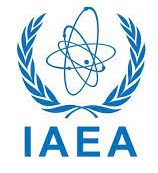Evaluación de la capacidad de bioabsorción de plomo por hongos filamentosos nativos del relave minero de Ticapampa (Recuay, Ancash)
Palabras clave:
Bioremediación, Rehabilitación emplazamiento de minas, Plomo, HongosResumen
Se determinó la bioabsorción de plomo en cinco biomasas fúngicas aisladas a partir del relave minero de la localidad de Ticapampa (Provincia de Recuay, Región Ancash); de las cuales se estudiaron las cepas con mayor porcentaje de sorción al plomo. El proceso de bioabsorción se evaluó usando un sistema de tubos de polietileno conteniendo, cada uno, 40 ml de solución contaminada con 200 ppm de plomo incubados a 30 °C en agitación constante a 150 rpm, utilizando 1 g/L de biomasa fúngica inactiva. La remoción del plomo fue medida por absorción atómica utilizando la técnica de flama, encontrando que las biomasas de las especies Talaromyces muroii, Talaromyces flavus y Penicillium velutinun (identificadas por secuenciamiento de ADN) son las más eficientes para disminuir la concentración de plomo en solución acuosa, logrando una capacidad máxima de bioabsorción de 189,7 mg/L, 82.7 mg/L y 33.8 mg/L, respectivamente a pH 6.0 en un tiempo aproximado de 48 horas de incubación. Los resultados indican que los hongos nativos, aislados de pasivos ambientales mineros, podrían ser utilizados como un material biosorbente rentable y fácilmente cultivable, para la eliminación de los iones metálicos como el caso del plomo en ambientes contaminados de metales pesados.
Descargas
Publicado
Número
Sección
Licencia
Derechos de autor 2021 Mirella Pérez, Paola Rosas, Gretty Villena, Kety León, Marco Espinoza

Esta obra está bajo una licencia internacional Creative Commons Atribución 4.0.








